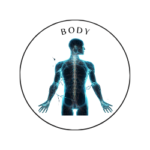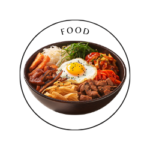 Mind
Mind
- Digital and Modern Well-being
- Mental Health and Emotional Well-being
- Mind-Body Connection and Holistic Health
- Parenting and Family
- Personal Growth and Development
- Relationships and Social Well-being
- Stress and Relaxation
- Therapeutic and Creative Practices
- Trauma and Recovery
- Work, Productivity, and Discipline
 Body
Body
 Fitness
Fitness
 Food
Food
 Beauty
Beauty
The Paleo Diet and Caveman Eating

The Paleo Diet: Eating Like Our Ancestors
The Paleo Diet, also known as the “Caveman Diet,” is a nutritional approach inspired by the eating habits of our hunter-gatherer ancestors during the Paleolithic era, which lasted from roughly 2.5 million to 10,000 years ago. Advocates of the Paleo Diet believe that by emulating the food choices of early humans, we can improve our health, reduce the risk of chronic diseases, and promote overall well-being.
This guide will delve into the principles of the Paleo Diet, its health benefits, what foods to include and avoid, and how it compares to modern dietary trends.
What Is the Paleo Diet?
The idea behind the Paleo Diet is simple: Eat only what our ancestors could hunt, gather, and forage. This means focusing on whole, unprocessed foods like meats, fish, fruits, vegetables, nuts, and seeds, while avoiding modern processed foods, grains, and dairy. The central premise is that our bodies are genetically programmed to thrive on the same foods our ancestors ate, and that the introduction of processed foods and agricultural products has led to a host of modern health problems.
Key Principles of the Paleo Diet:
- Whole, Natural Foods: Emphasising fresh, unprocessed ingredients.
- No Grains or Legumes: These are considered agricultural foods and are excluded from the diet.
- No Dairy: Dairy products are off-limits, as they were not part of the Paleolithic era’s diet.
- Healthy Fats: Focusing on fats from natural sources such as avocado, nuts, seeds, and oily fish.
- Lean Proteins: Grass-fed meat, free-range poultry, and wild-caught fish are encouraged.
- Lots of Vegetables and Fruits: These provide essential nutrients and fibre.
- No Processed Foods or Refined Sugars: Anything heavily processed or containing added sugars is avoided.
The Health Benefits of the Paleo Diet
-
Improved Digestion
By cutting out processed foods, grains, and dairy, many people experience better digestion and fewer gastrointestinal issues, such as bloating or gas. The high fibre content from fruits and vegetables also promotes a healthy gut. -
Weight Loss
The Paleo Diet’s focus on whole foods, lean proteins, and healthy fats, combined with the elimination of processed sugars and refined carbohydrates, can lead to weight loss and improved body composition. Many people feel fuller for longer, reducing the likelihood of overeating. -
Better Blood Sugar Control
The exclusion of refined carbs and sugary foods helps to stabilise blood sugar levels, reducing spikes and crashes that can lead to cravings and fatigue. This makes the Paleo Diet an attractive option for those managing insulin resistance or type 2 diabetes. -
Increased Nutrient Intake
Paleo prioritises nutrient-dense foods such as vegetables, fruits, and nuts. These foods are rich in vitamins, minerals, and antioxidants, which can help improve overall health and reduce inflammation. -
Reduced Risk of Chronic Diseases
The Paleo Diet may reduce the risk of developing chronic illnesses like heart disease, obesity, and certain cancers by promoting healthy eating patterns that lower inflammation, maintain blood sugar levels, and support a healthy heart.
What Foods Can You Eat on the Paleo Diet?
The Paleo Diet includes a wide range of whole, unprocessed foods that were available to our ancestors. Here’s a breakdown of the main food categories allowed:
Foods to Include:
- Meat: Grass-fed beef, free-range poultry, wild game, and other lean meats.
- Fish and Seafood: Wild-caught fish like salmon, mackerel, and shellfish.
- Vegetables: Leafy greens, root vegetables, cruciferous vegetables (e.g., broccoli, cauliflower), and more.
- Fruits: Berries, apples, citrus fruits, and other non-starchy fruits.
- Nuts and Seeds: Almonds, walnuts, flaxseeds, and chia seeds.
- Healthy Fats: Avocados, olive oil, coconut oil, and nuts.
- Eggs: Free-range or pasture-raised eggs.
- Herbs and Spices: Fresh herbs, spices, and seasonings are encouraged for flavour.
Foods to Avoid:
- Grains: Wheat, oats, barley, and other cereals are not allowed.
- Legumes: Beans, lentils, and peanuts (technically a legume) are excluded.
- Dairy Products: Milk, cheese, yoghurt, and butter are not part of the Paleo Diet.
- Processed Foods: Anything that comes in a box, bag, or is pre-made with added preservatives.
- Refined Sugars: White sugar, high-fructose corn syrup, and other artificial sweeteners are excluded.
- Refined Vegetable Oils: Such as canola oil, soybean oil, and sunflower oil.
The Paleo Diet in a Modern World
While the Paleo Diet takes inspiration from our ancestors, it’s important to acknowledge the differences in our modern environment. Access to a wider variety of foods, the use of farming techniques, and changes in the way food is prepared all play a role in how this diet is approached today.
For example, while early humans had limited access to fruits year-round, today we have the benefit of enjoying a wide range of fresh produce no matter the season. Additionally, modern cooking methods allow for the creation of Paleo-friendly versions of favourite dishes, such as grain-free bread or desserts made with natural sweeteners like honey or dates.
Challenges and Considerations
While the Paleo Diet has many benefits, it may also pose challenges for some people:
- Nutrient Gaps: By eliminating entire food groups like grains and dairy, there’s a risk of missing out on important nutrients like calcium and vitamin D, which are essential for bone health.
- Cost: Eating organic, grass-fed, or wild-caught foods can be more expensive than conventional alternatives.
- Sustainability: Some critics argue that the Paleo Diet is not environmentally sustainable, as it encourages a high consumption of animal products, which have a larger environmental footprint compared to plant-based foods.
Conclusion: Is the Paleo Diet Right for You?
The Paleo Diet is a popular and effective approach for those looking to improve their health by focusing on whole, nutrient-dense foods while eliminating processed and refined ingredients. It promotes a return to a more natural way of eating that prioritises the quality of food and the simplicity of preparation.
However, like any diet, it’s essential to approach it with balance. Consult a healthcare professional or dietitian before making significant dietary changes, especially if you have specific health conditions or nutritional needs. Whether you’re looking to lose weight, enhance digestion, or boost your overall health, the Paleo Diet can be an excellent option when applied mindfully and tailored to your lifestyle.
